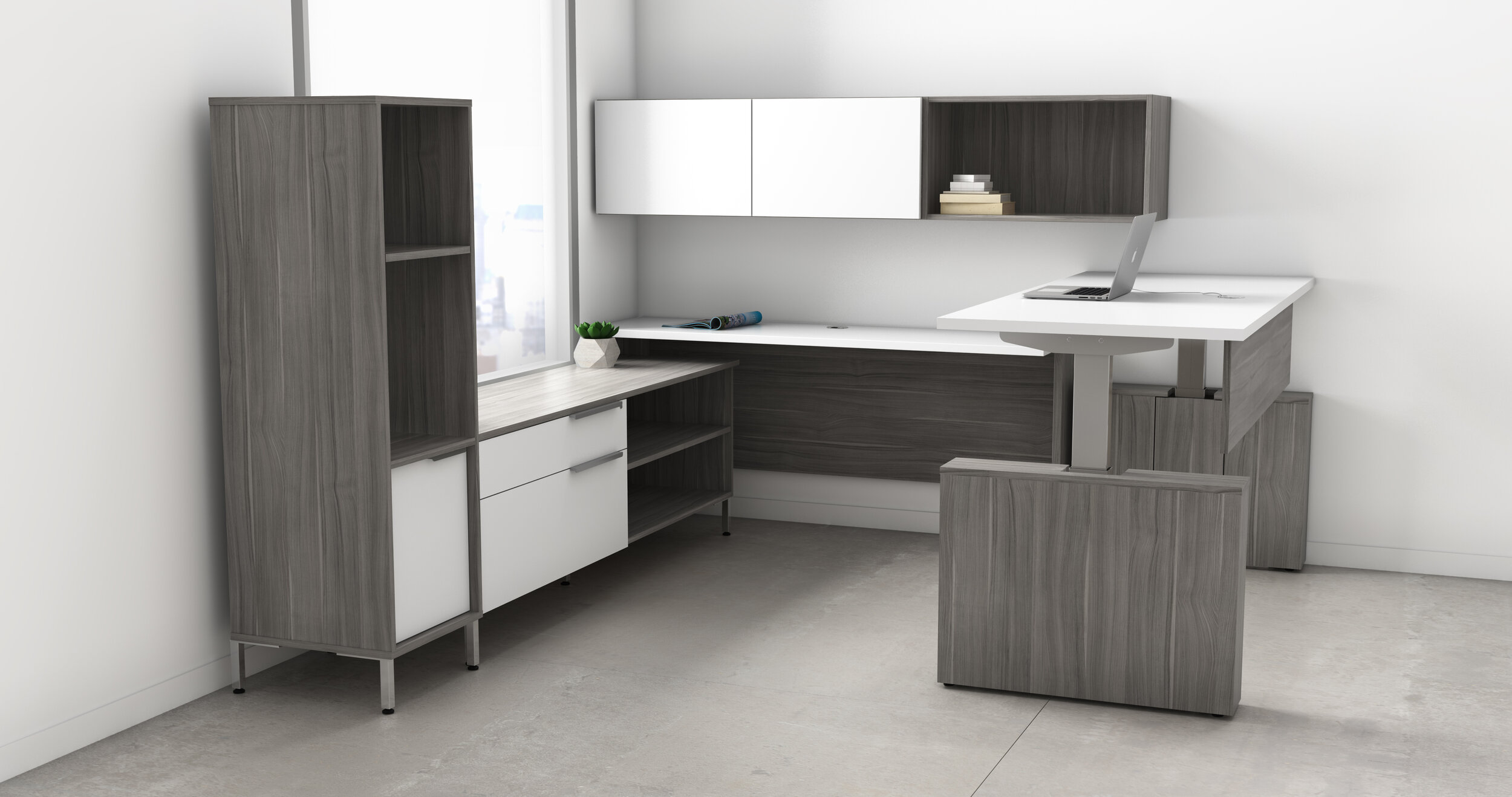Rise to New Heights with Ascend Casegoods from DeskMakers
Wellness is emerging as an essential element of today’s workplace design, and in step with this trend, DeskMakers introduces Ascend, a height-adjustable casegoods line that encourages greater mobility in corporate offices while maintaining a refined design aesthetic.
To counteract the negative health effects of prolonged sitting epitomized by the latest mantra, “Sitting is the new smoking,” Ascend extends the benefits and ergonomics of traditional sit-to-stand desking to the casegoods category. Offering a range of heights from 25-¼" (seated) to 50" (standing), Ascend casegoods allow end users to transition for sitting to standing within seconds and keep them moving throughout the day, which has been linked to numerous benefits, including improved health and wellbeing, greater concentration and productivity, as well as reduced pain, discomfort and fatigue1.
Designed in-house by DeskMakers Director of Product Development, Shaina Panzer, Ascend is characterized by simple, clean lines and thoughtful details with a contemporary look that moves quickly and quietly with end users. The height- adjustable base shroud conceals a large portion of the T-Foot, allowing the column and wires to pass into the base for a clean aesthetic.
Ascend can be specified as a freestanding piece or as part of a desk configuration and is offered in a variety of sizes for desks, returns and credenzas with multiple storage options for exceptional flexibility. The collection is intended to easily coordinate with the entire family of DeskMakers products so it can be mixed and matched while ensuring a sense of design continuity. Additionally, modesty panels vary from light and airy to substantial to match virtually any décor.
“With the introduction of Ascend, we are able to add height-adjustability to some of DeskMakers’ most popular casegoods lines, including SPX, Milano and Convergence,” said Phil Polishook, CEO of DeskMakers. “This new collection gives our customers additional flexibility and functionality with multiple looks and as many configurations possible, while supporting their most important asset: the health and wellness of their people.”





